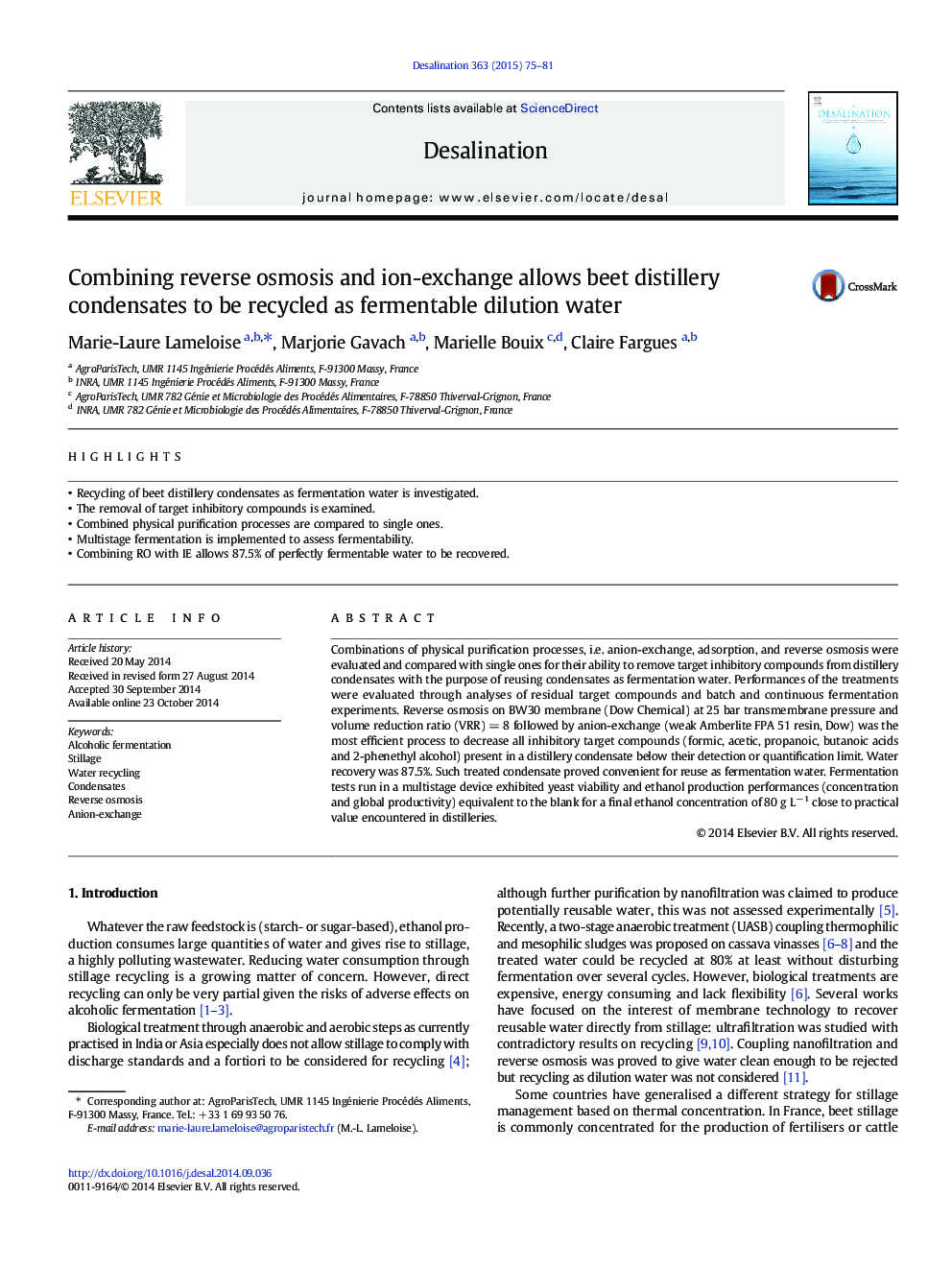| Article ID | Journal | Published Year | Pages | File Type |
|---|---|---|---|---|
| 623120 | Desalination | 2015 | 7 Pages |
•Recycling of beet distillery condensates as fermentation water is investigated.•The removal of target inhibitory compounds is examined.•Combined physical purification processes are compared to single ones.•Multistage fermentation is implemented to assess fermentability.•Combining RO with IE allows 87.5% of perfectly fermentable water to be recovered.
Combinations of physical purification processes, i.e. anion-exchange, adsorption, and reverse osmosis were evaluated and compared with single ones for their ability to remove target inhibitory compounds from distillery condensates with the purpose of reusing condensates as fermentation water. Performances of the treatments were evaluated through analyses of residual target compounds and batch and continuous fermentation experiments. Reverse osmosis on BW30 membrane (Dow Chemical) at 25 bar transmembrane pressure and volume reduction ratio (VRR) = 8 followed by anion-exchange (weak Amberlite FPA 51 resin, Dow) was the most efficient process to decrease all inhibitory target compounds (formic, acetic, propanoic, butanoic acids and 2-phenethyl alcohol) present in a distillery condensate below their detection or quantification limit. Water recovery was 87.5%. Such treated condensate proved convenient for reuse as fermentation water. Fermentation tests run in a multistage device exhibited yeast viability and ethanol production performances (concentration and global productivity) equivalent to the blank for a final ethanol concentration of 80 g L− 1 close to practical value encountered in distilleries.
